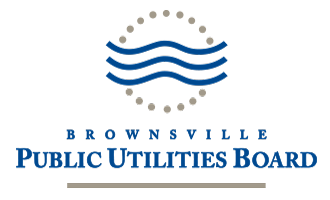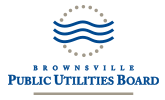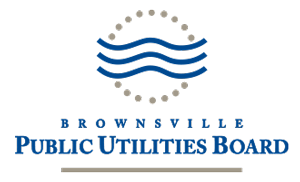BPUB Website Teacher’s Guide
This teacher’s guide will help you use the e-SMARTkids site to educate your students about energy and electricity.
We’ve included an overview of the site’s structure and content, and suggestions for enhancing students’ learning through classroom discussion and further exploration.
Site Overview
The e-SMARTkids site uses games, core curriculum science content, and activities to teach students and their families about electrical science and safety, renewable energy, and water conservation.
The site is geared to a range of interests and reading levels and can be used by students in elementary, middle, and high school. Non-readers will need adult assistance to play the games.
This site features an extensive section for students, an informational section for teachers (you’re in that section now), and a brief section for parents.
Kids Section
This tab includes five components:
1. Content Sections. These sections cover a variety of standards-related core content about electrical science and safety, renewable energy, and water conservation.
- Electrical Safety-SMART: Includes principles of electricity science and strategies for indoor and outdoor electrical safety, testimonials from electrical accident survivors, and energy efficiency tips for home and school.
- Use Water Wisely: Features water science, why it’s important to save water, and water conservation activities and tests.
- Renewable Energy: Explains the primary forms of renewable energy, including biomass, geothermal energy, hydropower, solar power, wind power, and ocean energy.
2. Videos
- The Electrical Safety World video comprises five episodes on important electrical safety topics including conductors and insulators, indoor and outdoor electrical safety, and fallen power lines. The video is accompanied by a printable teacher’s guide and student worksheets, located in the Teachers section of the site.
- The Call 811 Before You Dig video uses an engaging, pirate-themed storyline to instruct students on the importance of calling 811 before digging to prevent contact with underground utilities.
3. Energy FAQ: Questions and answers that convey interesting facts about electricity and electrical safety, renewable energy, and energy efficiency.
4. Games. Interactive games that capture kids’ interest while conveying information about electrical safety, energy efficiency, and renewable energy give students an opportunity to put principles learned in these areas into practice.
- Shock Blocker: Teaches students about the dangers of water and electrical shock hazards.
- Breaker, Breaker: An interactive game to understand how many appliances can run in a room before overloading a circuit. This gives students a sense of how many amps various appliances use, and the load they draw on the electrical system.
- The Voltinator: Promotes student understanding of voltage and how it propels electrons between atoms in a circuit to power electric appliances.
- It’s Not Trivial: A fun quiz show-style game that serves as a brief review of concepts introduced in theElectrical Safety-SMART website section.
5. FAQ. Students get answers to questions about electrical science and safety, renewable energy, and energy efficiency on this page.
6. Home Inspections. These printable checklists on electrical safety and water conservation practices can by done by students with their families at home.
Teachers Section
This tab includes five components:
1. Classroom Resources. Electricity Safety-SMART! Curriculum Materials include tips for teaching the online content, experiments, and hands-on activities in the Get SMART! section of the website, as well as printable worksheets. The worksheets assess comprehension of the core messages introduced.
2. Helpful Links. This section contains links to additional background, games, and experiments on the topics of electricity, renewable energy, and energy efficiency.
3. Video Resources. The Electrical Safety World Video Teachers Guide and Study Sheets expand on and help reinforce core electrical safety concepts introduced in the video.
4. Water and Energy Glossary. Glossary contains energy and water vocabulary words found on this site that may be unfamiliar to students.
5. Home Inspections. These printable checklists on electrical safety and water conservation practices can by done by students with their families at home.
Parents Section
This section features useful energy information for parents, including tips on safe digging, a home electrical safety inspection, and electrical emergency response tips. It also clarifies the privacy policy of this website.
Enhancing Students’ Learning
You can reinforce what students learn on this site by reviewing the key objectives for each component and conducting classroom discussions about them. Here are some suggestions.
Kids Content
Core Content Sections
For the Electrical Safety-SMART content section there is a student worksheet that tests students’ retention of core concepts. For hands-on learning to support these concepts, please see the Experiments and Activities component correlating to each section. All of these features are found in the Teachers section.
Games
Some teachers find it useful to have students report back to the class what they learned after playing these games. Or you may wish to use the games as a fun reward or review of what’s been learned elsewhere on the site. Consider the following discussion ideas.
- Shock Blocker: Kids will stop the lightning bolt from appearing three times in a row on the gameboard.
- The Voltinator: Promotes student understanding of voltage and how it propels electrons between atoms in a circuit to power electric appliances.
- Breaker, Breaker: Students calculate the amperage of various devices to see if they can run concurrently in a room without tripping a circuit breaker or blowing a fuse. This teaches students the concept of a circuit load, and that there is a limit to the amount of applicances or devices one can put on any given circuit.
- It’s Not Trivial: What electrical safety tips are discussed in this game? (Even low-voltage appliances can cause dangerous electric shock; stay away from pad-mounted transformers; use only battery-powered devices near a tub or pool; clean appliances only when they are unplugged, and keep them away from water.) What are some of the science concepts introduced? (Electricity is carried by electrons; the flow of electrons from atom to atom through a conductor is an electric current; the nature of ground faults and circuits.) Name an energy-saving tip. (Turn off your computer when not using it.) What are some lightning safety tips? (Don’t open an umbrella when there’s lightning. If you cannot get into a house or other building during a lightning storm, stay inside a hardtop car with the windows closed.)
FAQ
Students can view questions and answers about electrical science and safety, renewable energy, and energy efficiency on this page.
Electrical Safety and Water Conservation Inspections
Review the checklists with students in class, and then assign completion of them for homework. Ask students to report back for an in-class graphing activity. On the white board, chart which practices most commonly appear under “Needs Fixing” (for Safety) or “Not Yet” (for Water Conservation). Have students postulate why these practices might be the ones least commonly engaged in, and then discuss what they can do about it.
Going Further
Use the following ideas to help your students take their understanding of electrical safety, energy efficiency, and energy science to the next level.
- Prepare a 3-minute presentation or skit for the class on potential dangers around electricity and how to remedy or prevent them.
- Prepare a poster showing the various types of renewable energy or various ways to help conserve water at home.
- Create a radio commercial advocating practices and activities that one can do to help save energy at home or at school.
- Come up with an interesting question about electricity, renewable energy, or water conservation that is not answered on this website. Research the answer, and explain it with an in-class presentation.
- Show this website to your parents, and then interview them as to what they learned about how electricity works, how to be safe around electricity, or how to save water. Report back to the class.



